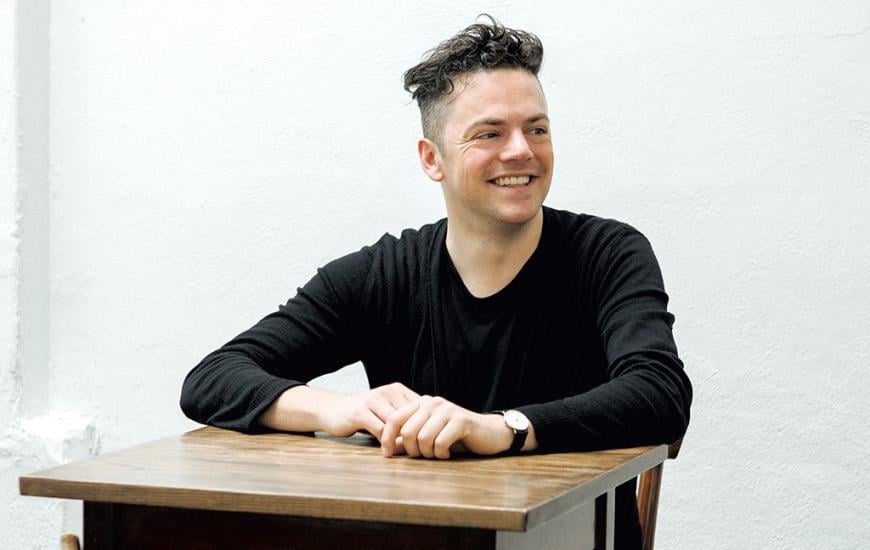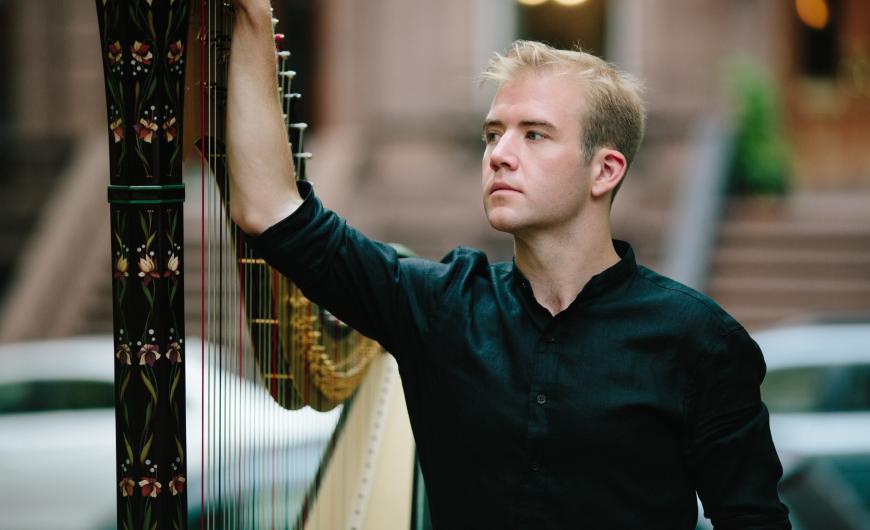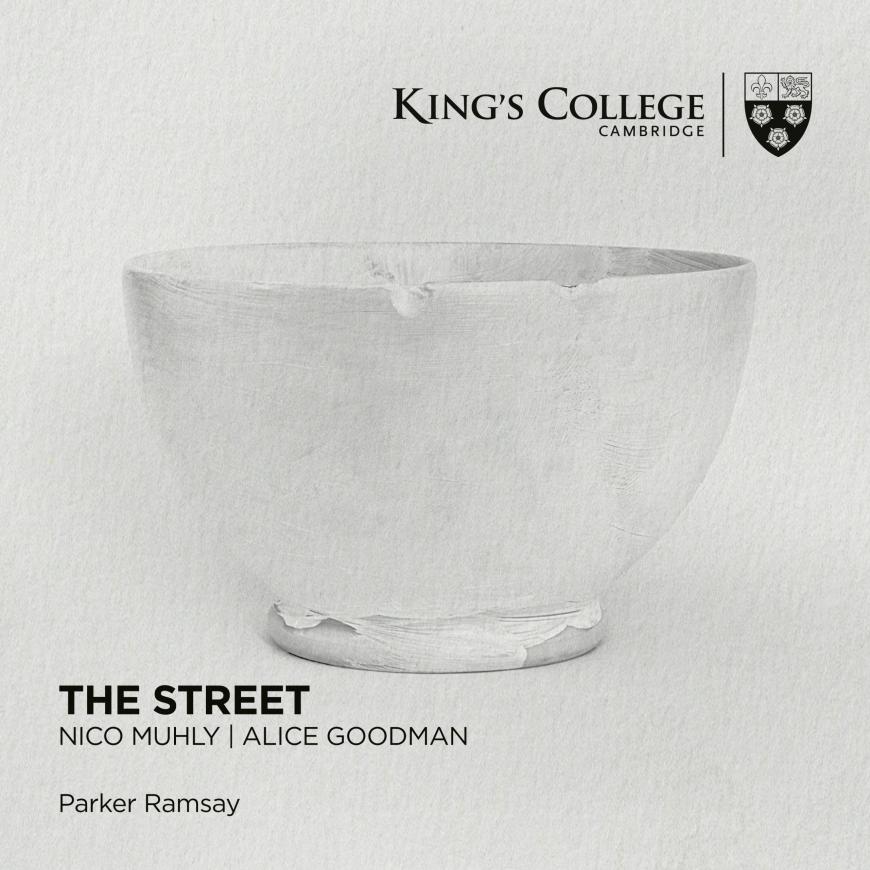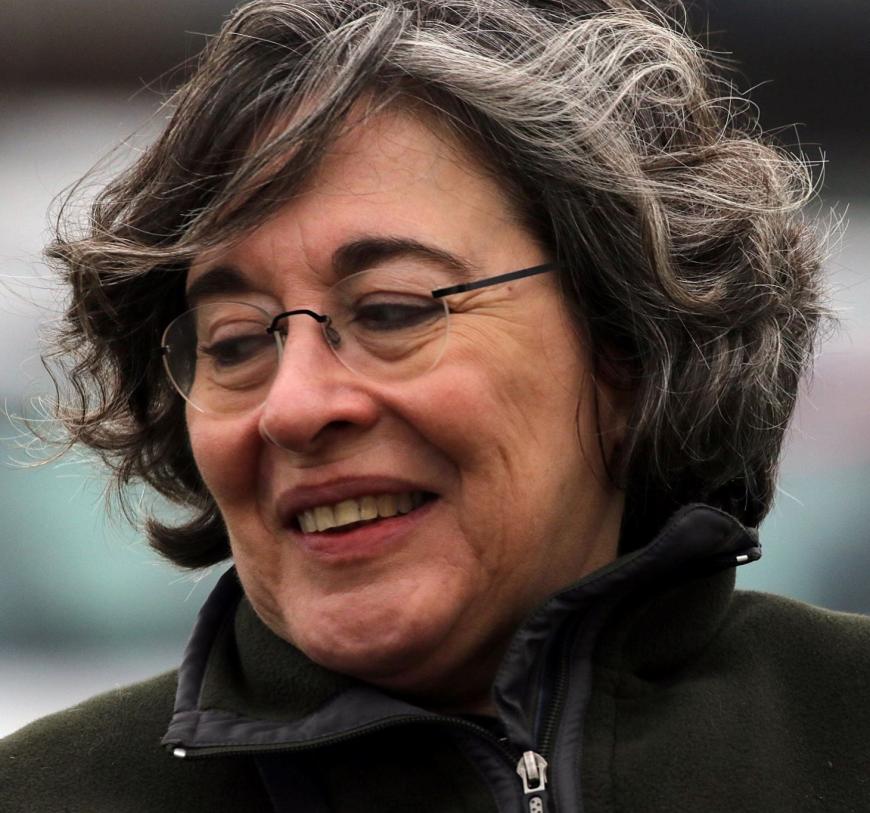
Every two years, the Rubin Institute for Music Criticism convenes in San Francisco, teaching music students across the U.S. about music journalism. SF Classical Voice has partnered with the Rubin Institute to give the program’s top writers more experience in the field with an internship. This year’s Rubin winners, Emery Kerekes and Lev Mamuya, will be with SFCV for six months, reporting from New York and Boston, respectively.
“Did you expect it to go any other way?”
Every Good Friday, the story of Jesus Christ’s final hours gets told anew. Trial. Condemnation. Procession. Crucifixion. Burial. During that service, worshippers traditionally meditate on the 14 Stations of the Cross, the summary images of the son of God’s last moments — a stand-in for bona fide pilgrimage to Jerusalem.
In The Street, a new evening-length cycle for harp, narrator, and singer(s), composer Nico Muhly and librettist Alice Goodman treat the 14 stations with the immediacy of a witness — at one moment a passive, descriptive onlooker, at the next a malicious actor who intentionally trips Jesus under the weight of his own cross, close enough to smell the dripping blood.
“When you pray the stations, you’re not supposed to imagine you’re Jesus or Mary or anyone important,” said Goodman during an animated Zoom conversation that included Muhly and harpist Parker Ramsay, who conceived and premiered the work. “You’re supposed to imagine that you’re a little nobody at the edge of the crowd, receiving this event and taking it in and walking along.”

The four of us spoke in advance of The Street’s Oct. 14 CD release on the in-house record label of King’s College, Cambridge. Ramsay premiered the work — in his words, one of the harp’s largest-scale solo outings — at King’s in April 2022, part of the college’s notoriously busy Holy Week schedule. The piece received its U.S. premiere at South Carolina’s Spoleto Festival that June and made its way to the dank crypt of New York City’s Church of the Intercession the same day the recording debuted.
As is common in the stations’ few musical settings, every movement of The Street roots itself in a textual rumination, here visceral, sensuous pieces of prose from Goodman, who is also an Anglican priest. The texts can be read aloud, interspersed between movements (as they have been in all performances to date), or printed for the audience to read silently as they listen to the harp. But crucially, the texts are not meant to be set to the music. Like the stations’ images, they serve as points of thought, springboards from which Muhly drew his musical inspiration. “[The text] sort of functions like a marinating and tenderizing agent for the mind of the composer,” he said.

The Street is Muhly’s maiden outing for solo harp, and for the first time in ages, he felt as if he were starting from square one. “You don’t take a harp class at conservatory,” he said, chuckling. “It’s an instrument where we hear it casually. In orchestras. In hotel lobbies.” Muhly notes that the repertoire that composers study for craft often fails to overlap with the curricula of instrumentalists — especially true for the harp, whose solo works are few and obscure in comparison to the vast mainstream choices for, say, violin or piano.
In The Street, Muhly stretches the instrument far beyond its archetypal angelic role. The short upper strings often pitter-pat but just as regularly appear as aggressive, acerbic twangs. As Jesus falls under the weight of the cross and eventually dies, Muhly asks the player to pluck several adjacent low strings so hard that they clatter against one another. (At the performance in the Church of the Intercession crypt, the audience flinched visibly at the sound.) He even takes a page directly out of Paul Hindemith’s Harp Sonata, setting to music the final words of Goodman’s meditation on Jesus’s third fall — “However low I fall, let me not fall far from you” — just as Hindemith did an obscure poem of 18th-century German balladeer Ludwig Christoph Heinrich Hölty.
Ramsay conceptualized The Street while recording his acclaimed harp transcription of Bach’s Goldberg Variations in the Gothic chapel of King’s in 2019. It’s a space with which he’s intimately familiar. As an undergraduate, multi-instrumentalist Ramsay served as the Choir of King’s College, Cambridge’s first American organ scholar. For his next project, he sought a new work that took specific advantage of the chapel’s sonorous acoustic.
“Because the harp, like the organ, is an enormous harmony machine, it fills the chapel,” Ramsay said. “If I was having a bad day, I would drag my harp to the chapel and play.”
Ramsay met Muhly, whose works include organ cycles for Advent and Lent, in 2020. It quickly became clear that the two shared a wavelength. “[Muhly] speaks church. He speaks new music. And he also speaks England very well — he’s spent a lot of time in Cambridge,” said the harpist.
The pair approached Goodman, who had largely retired from libretto writing after the early-’90s controversy surrounding her text to John Adams’s opera The Death of Klinghoffer. She agreed to contribute. The open-endedness of the stations, Goodman contended at the time, makes them prime material for a writer emerging from dormancy. And when King’s asked to involve its choir, Ramsay and Muhly obliged with glee, selecting plainchants to intersperse between each station’s text and harp response.
For Ramsay, part of the piece’s beauty is its prescribed ritual, an aspect the artists discussed at great length with their sponsors at King’s. The creators capitalized on the Anglican tradition of structured, noble grandeur. Goodman, who hadn’t attended any rehearsals prior to the premiere, found the hectic Holy Week buzz fading as she sat in the chapel. “It’s very hard to describe what it was like to be at King’s [that night], to have the chance to hear [the piece] and attend to it,” said Goodman. “We did this on Holy Saturday. It’s the day God is dead. It’s the day when Jesus is harrowing hell.”

The three collaborators agree that The Street escapes categorization. It doesn’t lend itself to a composite description, Muhly contends; it’s an entirely new, sprawling form that doesn’t fit into a box of this-plus-that. “The text isn’t a libretto, but it isn’t a sermon, but it’s also sort of both those things,” he said. “And it’s the length of a one-act opera — it’s not that, but again, it’s not not that. There’s no overall framing device.”
Though Ramsay, Muhly, and Goodman ostensibly serve three different functions for The Street — performer, composer, author — they all have feet in the others’ domains. Ramsay and Muhly each have extensive experience in the Anglican sphere, and Goodman’s early outings with John Adams place her not only firmly in the new-music world but more specifically in the school of American minimalism from which Muhly’s stark style descends. Their creative conversation happened naturally in a lingua franca of sorts, says Muhly; no one had to translate for anyone else.
Throughout their collaboration, the trio held unwavering trust in each other’s creative processes. “[The Street] couldn’t happen with any other group of people at any other time, in any other context,” said Muhly. “I hope everyone can react in their own highly specific way. After all, that’s sort of the way of church — everyone is there for a different reason.”


